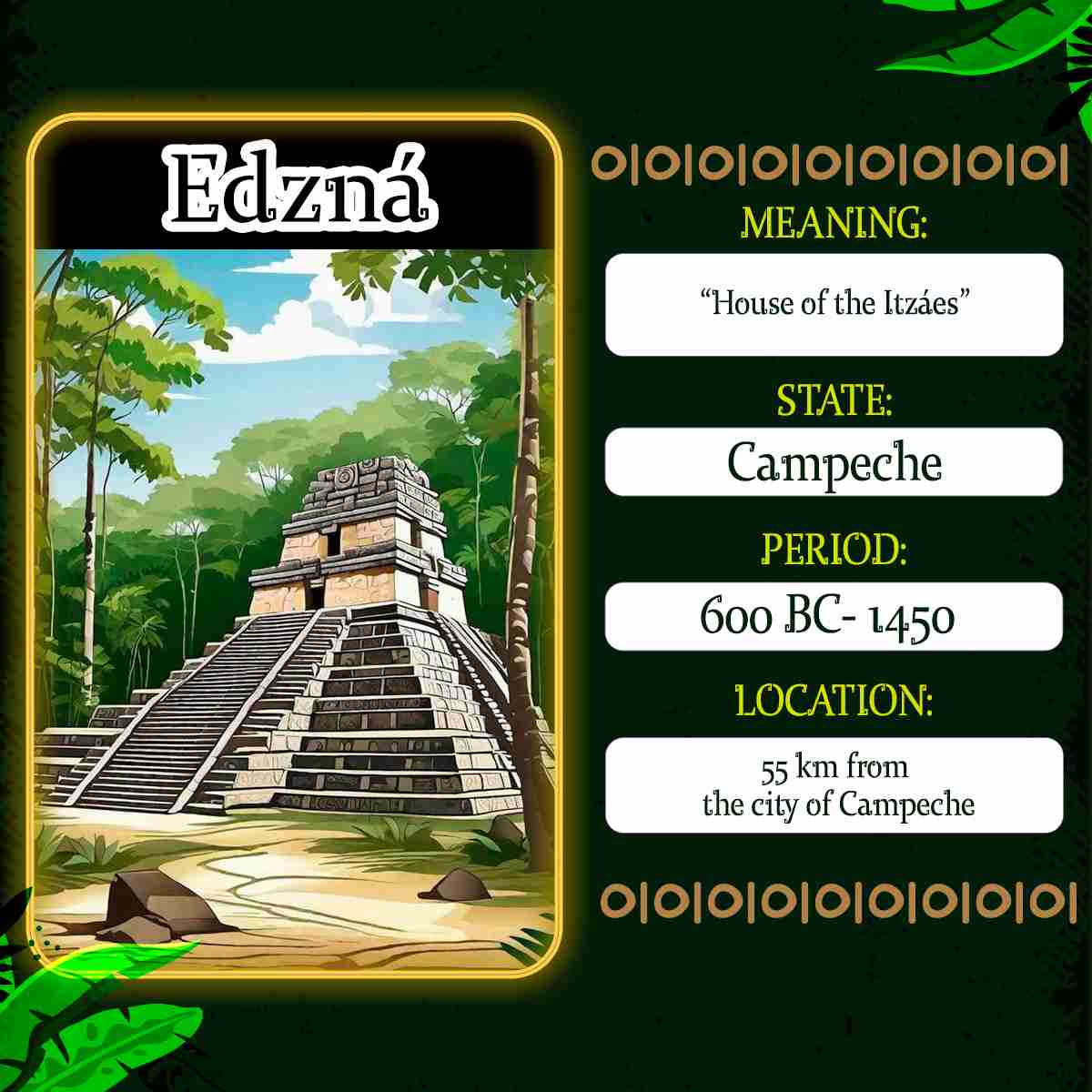The pre-Columbian settlement of Edzná covered an average area of 25 km².
As a small community expanded and developed, shortly before the beginning of our era, a centralized government was established.
Edzná stood out for the construction of an efficient rainwater collection, storage and disposal system.
It concentrated on production, imposing buildings were erected and dominion was exercised over the surrounding towns.
Between the years 400 and 1000 AD, Edzná established itself as a powerful regional capital in the western peninsula. However, in the following four centuries, it lost political and economic strength until its abandonment around 1450 AD.
As in other sites in the Mayan world, the first buildings at Edzná were covered with large blocks of limestone, meticulously cut, covered with thick flattened stucco and painted an intense red. Many facades were decorated with faces of gods, mythical animals and symbols, using modeled stucco, similar to plaster, painted in various colors. These elements are considered characteristic of Petén architecture.
With the development of the site, other architectural styles such as Chenes, Puuc and Tardíos were introduced. Thus, in Edzná, we can observe an extensive sequence of constructions that spans just over 15 centuries.
Did you know…?
Some of the crops detected in this area are corn, pumpkin, amaranth, cactus, cassava and chili, whose use dates back to before our era.

